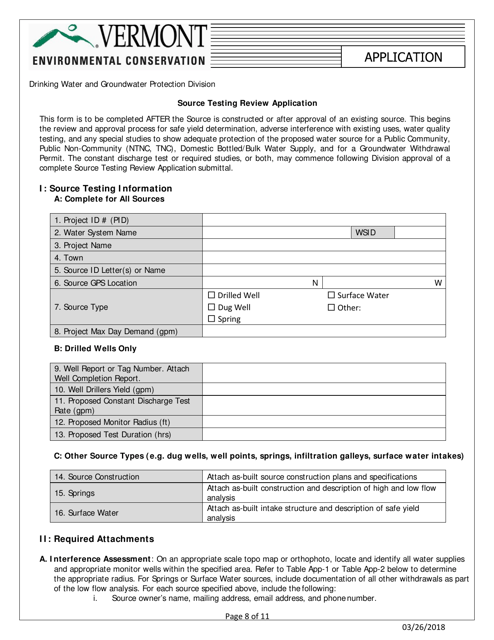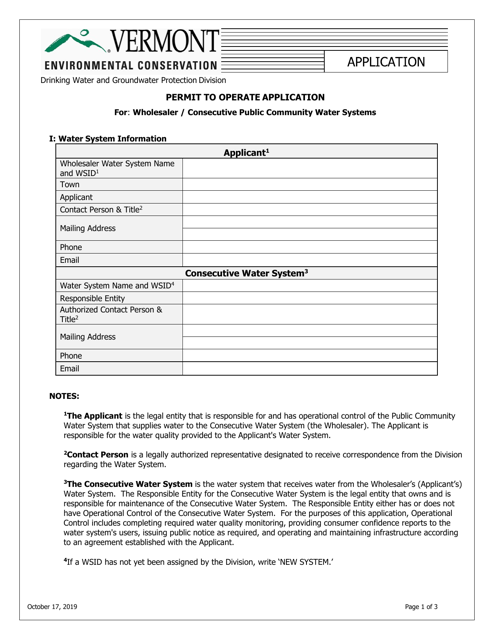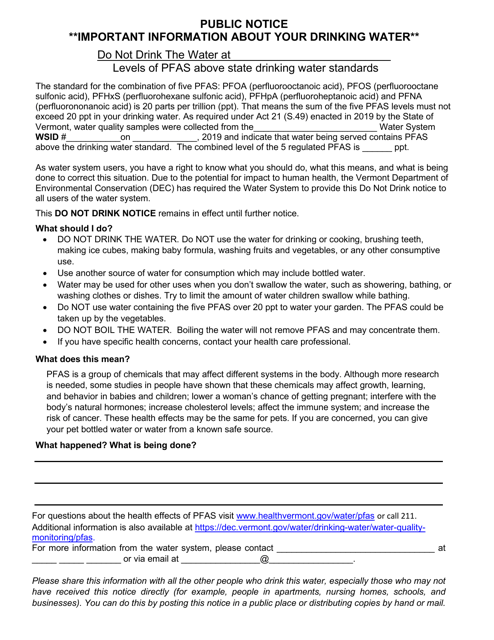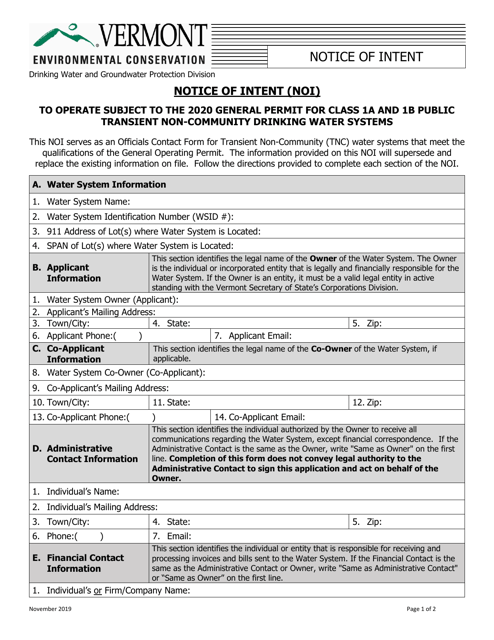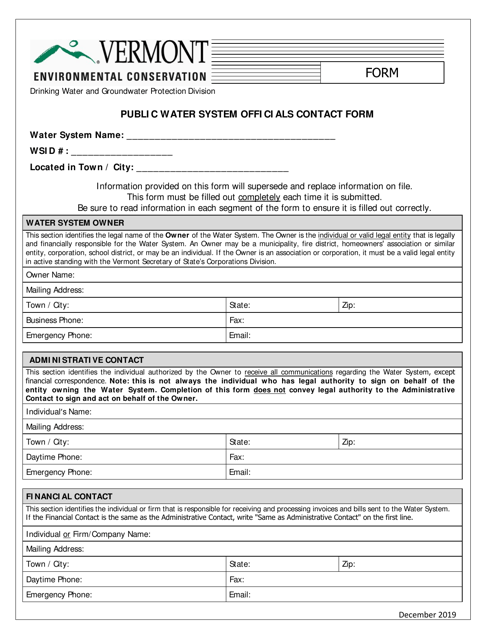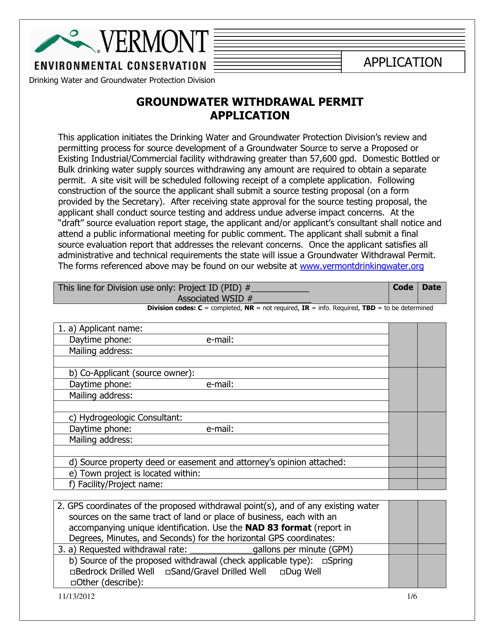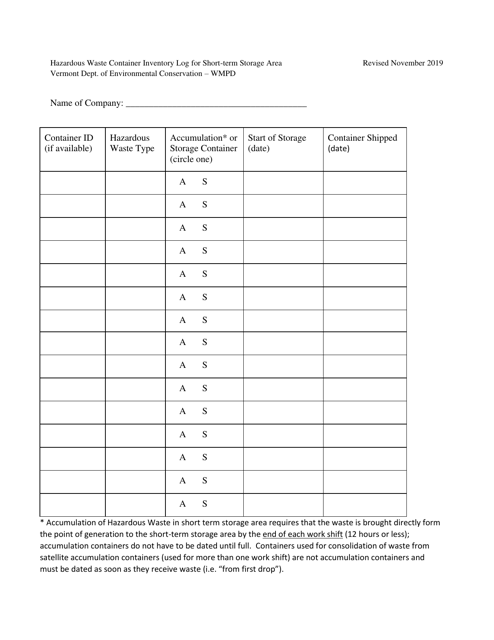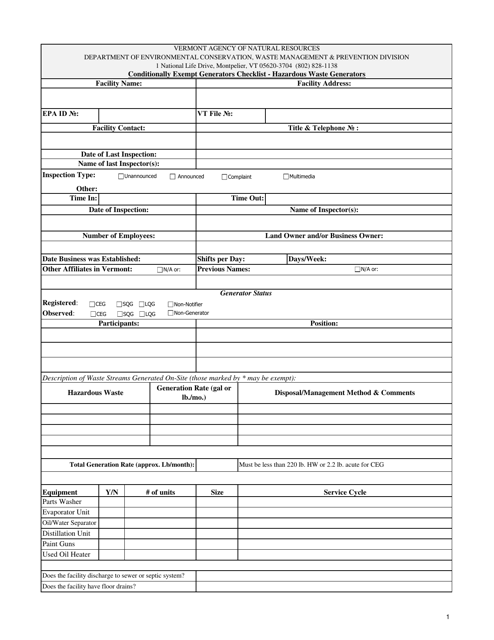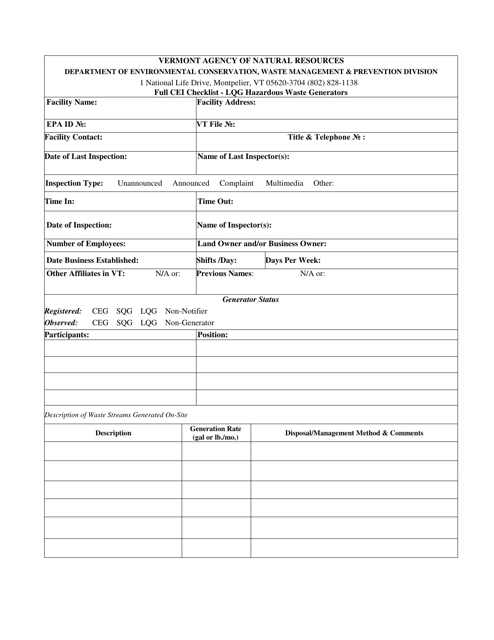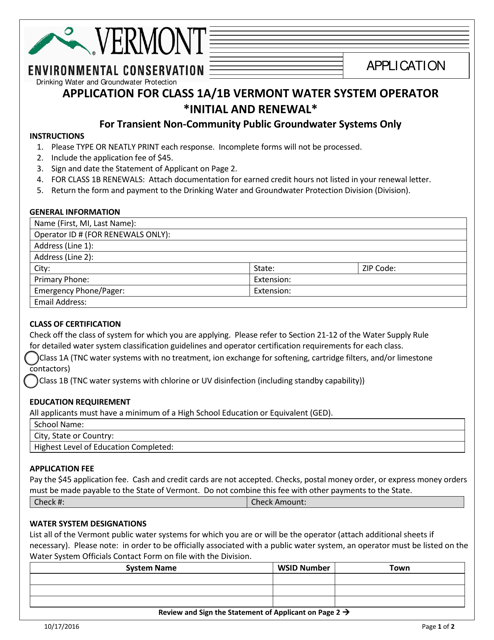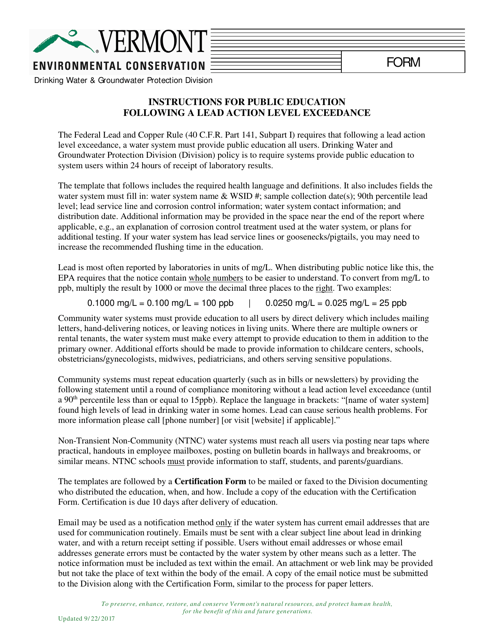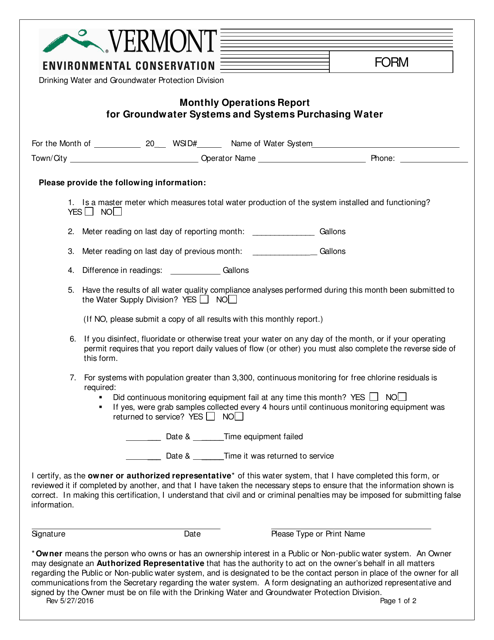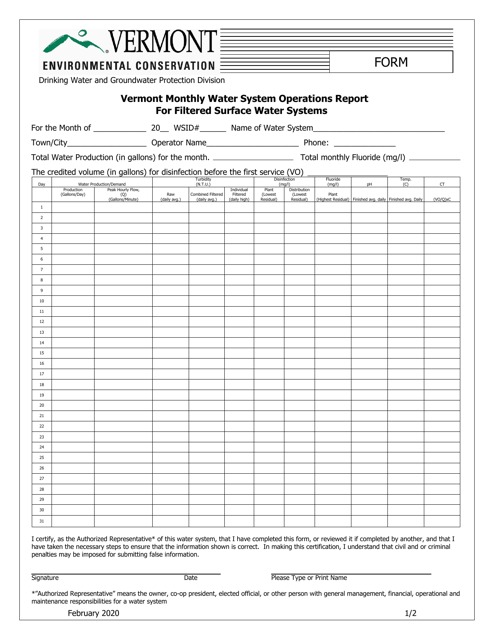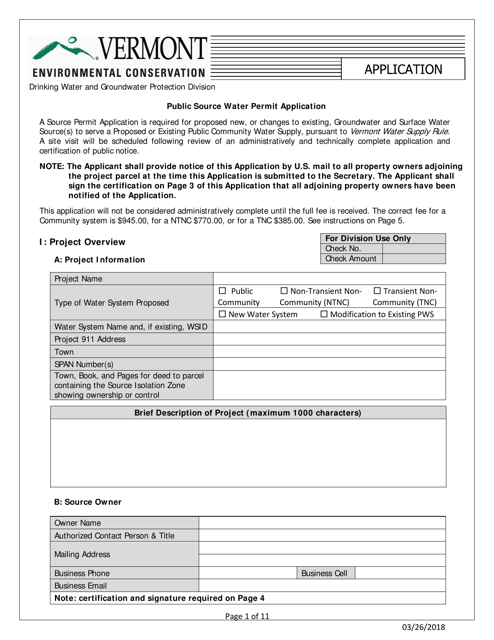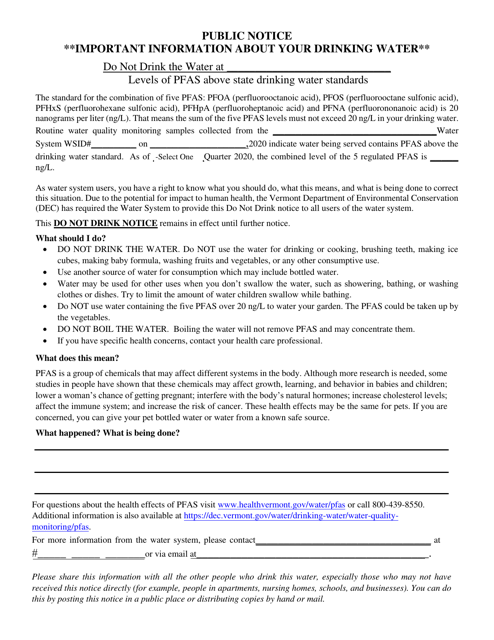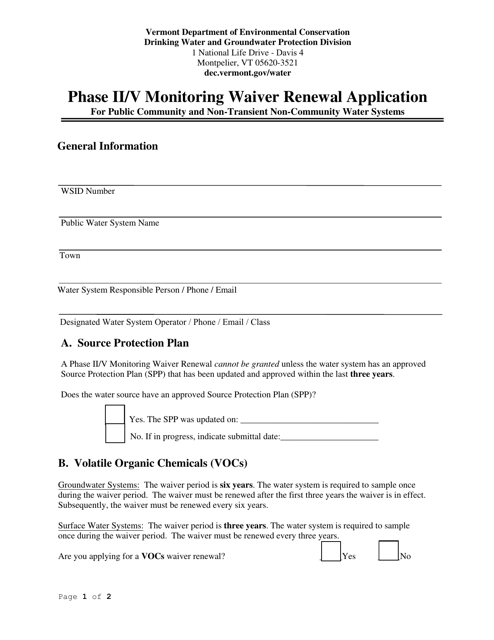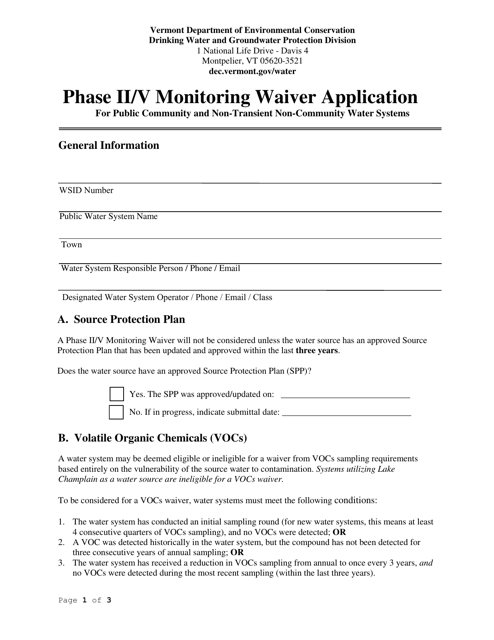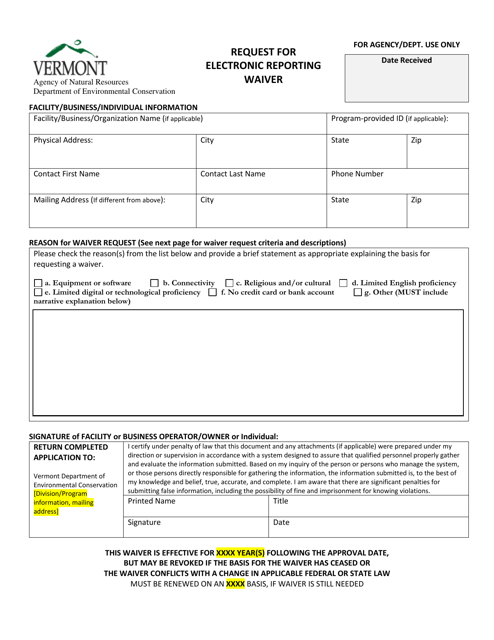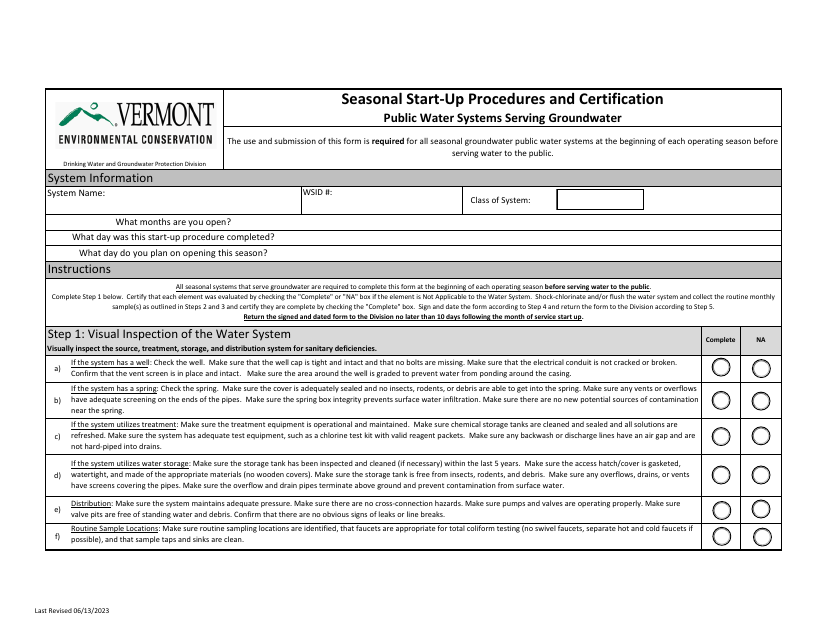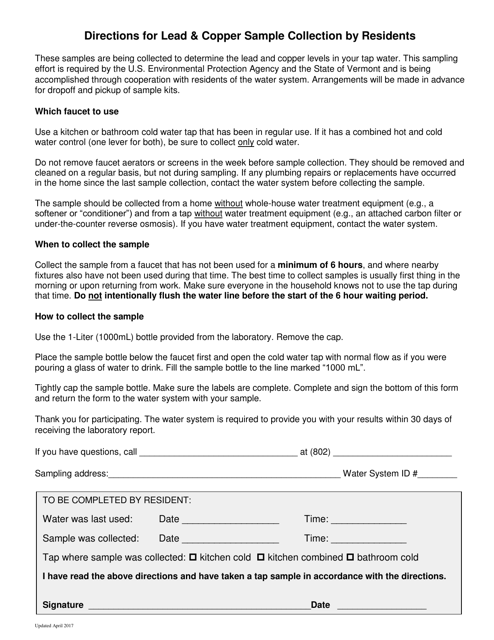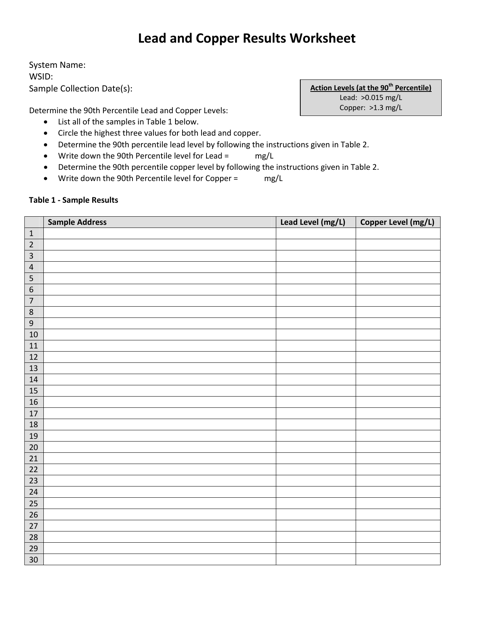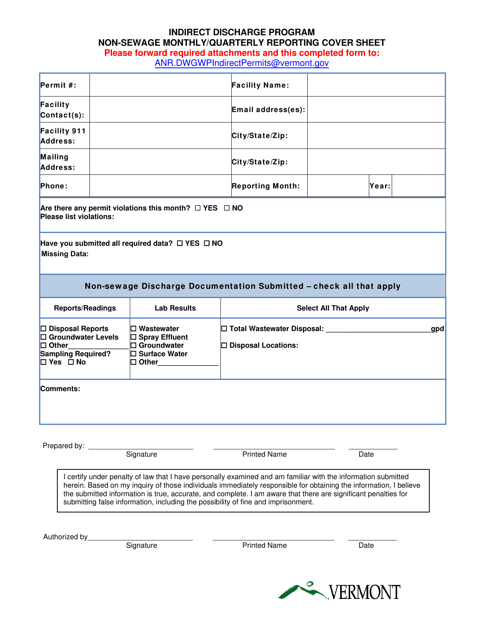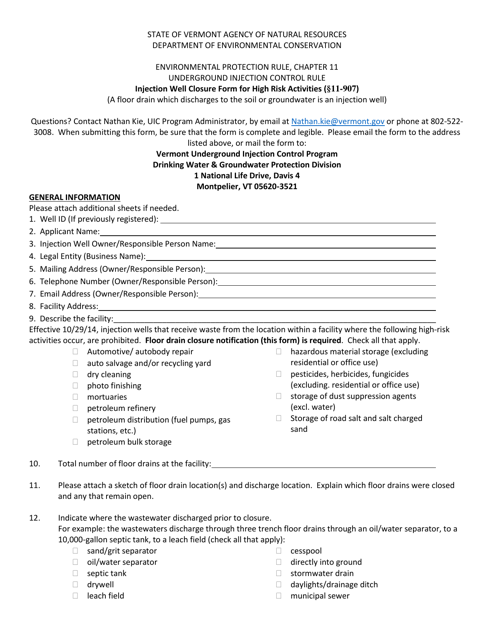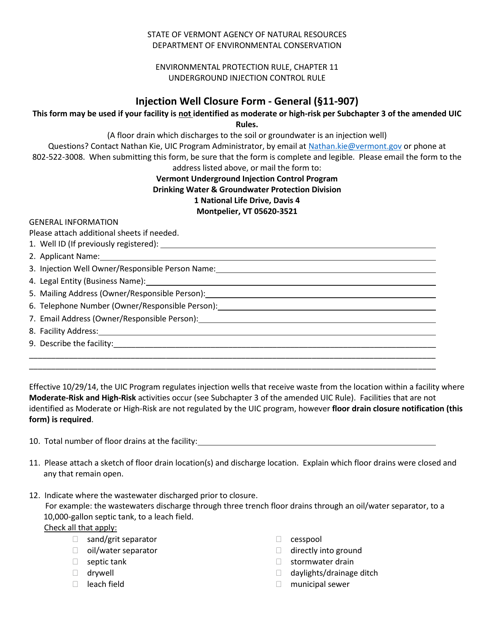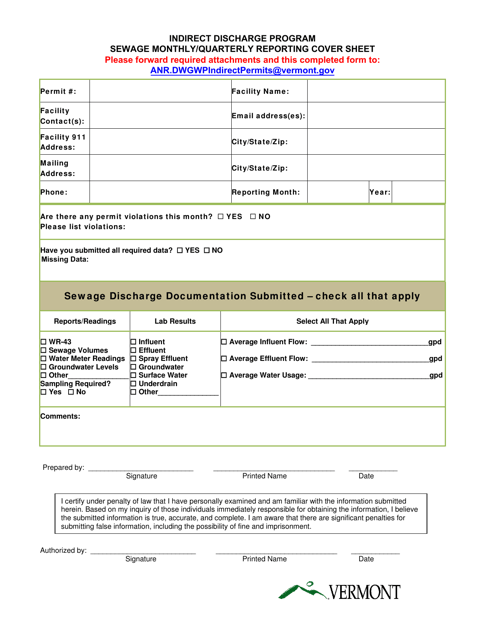Vermont Department of Environmental Conservation Forms
Documents:
250
This document provides a coliform sampling plan for public water systems in Vermont with a population over 1,000, in accordance with the Revised Total Coliform Rule (RTCR).
This document is used for applying for a review of source testing in the state of Vermont.
This document is for applying for a permit to operate a public water system in the state of Vermont. It is used to ensure that the water system meets safety and quality standards.
This document is an application form for wholesalers or consecutive public community water systems in Vermont to obtain a permit to operate.
This document template provides a public notice regarding the consumption of PFAS-contaminated water in Vermont. It helps inform the public about the potential health risks associated with drinking water containing PFAS chemicals.
This document is used to notify the relevant authorities of the intention to operate a public transient non-community drinking water system in Vermont, subject to the 2020 General Permit for Class 1a and 1b systems.
This document provides instructions for applying for a construction permit for a public water system in Vermont. The instructions include the necessary steps and forms to complete the application process.
This document is an application for obtaining a permit to construct a public water system in the state of Vermont. It is required for individuals or organizations planning to build a public water system.
This document is used for applying for a permit to withdraw groundwater in the state of Vermont. It is necessary for individuals or businesses who wish to access and use groundwater resources for various purposes such as irrigation, drinking water supply, or industrial use.
This document is used for keeping track of hazardous waste containers in the short-term storage area in Vermont. It helps ensure proper management and disposal of hazardous waste.
This daily inspection checklist is used for monitoring and ensuring compliance with safety regulations in short-term hazardous waste storage areas in Vermont. It helps to identify any potential hazards or issues that may arise.
This document is a checklist for hazardous waste generators in Vermont who may be conditionally exempt. It provides guidance on the required steps and procedures to ensure compliance with regulations.
This document is a checklist used by Small Quantity Generators (SQGs) of hazardous waste in Vermont. It provides a comprehensive evaluation of compliance with the Vermont Hazardous Waste Management Regulations.
This type of document is a full CEI (Corrective Action Exemption Initiative) checklist for LQG (Large Quantity Generator) hazardous waste generators in the state of Vermont. It contains specific guidelines and requirements for complying with hazardous waste regulations.
This document is an application form for individuals who are interested in becoming a Class 1a/1b Vermont Water System Operator specifically for transient non-community public groundwater systems in Vermont.
This document provides information and guidelines for public education in Vermont following a lead action level exceedance in the water supply.
This document provides a monthly report on the operations and management of groundwater and water purchasing systems in Vermont. It includes details on water quality, supply, and any relevant issues or updates.
This document is an application for a permit to use public source water in the state of Vermont.
This document provides information about the chemical and radiological maximum contamination level (MCLs) for public notice in the state of Vermont. It outlines the standards and guidelines for safe levels of these substances in public water systems.
This document is for renewing the Phase II/V Monitoring Waiver Application for Public Community and Non-transient Non-community Water Systems in Vermont.
This document is for applying for a waiver to monitor water systems in public communities and non-transient non-community areas in Vermont.
This form is used for requesting a waiver for electronic reporting in the state of Vermont.
This form is used for notifying the Vermont authorities about the emergency use of bulk water hauling as a source of water.
This document is used for requesting the voluntary revocation of a permit in the state of Vermont.
This document provides directions for residents in Vermont on how to collect samples for lead and copper testing.
This form is used for applying for an indirect discharge permit in the state of Vermont. It is required for individuals or businesses that want to discharge pollutants into surface waters through a point source that is not directly connected to a waterbody.
This form is used for applying for an indirect discharge permit in Vermont. It is required for businesses or individuals who discharge wastewater into a municipal wastewater treatment facility.
This document provides a worksheet for recording and analyzing lead and copper test results in Vermont.
This document provides the monthly bacteriological results for bottled water facilities in Vermont. It ensures the safety and quality of bottled water in the state.
This document is for individuals or businesses seeking approval to sell bottled drinking water in Vermont or make changes to an existing bottled water facility approval.
This document is a cover sheet used for reporting monthly or quarterly information related to indirect discharge in the state of Vermont.
This Form is used for closing injection wells involved in high risk activities in the state of Vermont.
This Form is used for closing injection wells in the state of Vermont. It includes general information and requirements for the closure process of such wells.
This form is used for closing injection wells in Vermont that require a UIC permit.
This document is a cover sheet for reporting monthly or quarterly sewage information in Vermont's Indirect Discharge Program. It is used to provide essential details about sewage discharge activities.


